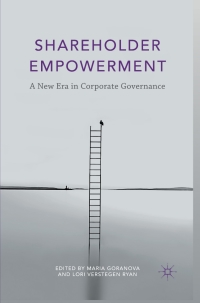Question
Please help with my Finance study guide, and include work so I can understand where each answer comes from! I know it's a lot of
Please help with my Finance study guide, and include work so I can understand where each answer comes from! I know it's a lot of info, but I need help understanding the material, and I will give thumbs up!!! Thank you so much!!
Use the following information for the questions below:
The Cuisinware Home Appliances, Inc. (CHA) is evaluating the market potential of a new moderately priced programmable coffee maker to capture a market share of the growing U.S. market. The results of an initial questionnaire that CHA has conducted in major markets six months ago and cost $70,000 were positive. A more comprehensive market test study that will cost an additional $225,000 was just completed and affirmed at least a 14% of the total coffee maker market. CHA has not yet paid for this study.
Now CHA is at the point where it is considering investing in the assets needed to produce the coffee makers. The makers would be produced in a building owned by the firm. The building, which was bought by CHA 20 years ago for $115,000, is currently vacant but it can be sold for $300,000. The value of the building on CHAs books is $8,000. CHA can depreciate this $8,000 over two years on a straight-line basis. In order to estimate the market value of the building at projects end, the company assumes that the price change will follow the trend experienced in the last 20 years. The land on which the building sits was bought for $96,000 twenty years ago and it is valued at $255,000 today. The expected appreciation in the land value is 4.60% per year over the coming ten-year period. CHA assumes that it will be able to sell both the building and the land together at their expected values at the end of the projects life.
The price of the new equipment needed is $1,750,000. It will require and additional $50,000 in shipping and installation costs. The useful life of the machine is 15 years but the company intends to use it for only the ten years that is the life of the project and then sell it at the termination of the project. It estimates its salvage value at $960,000. Production is estimated to be 66,000 units in the first year, rising by 16% per year for the following five years then falling by 7% per year for the remaining life of the project. The price of the units in the first year will be $35. The coffee maker market is highly competitive and CHA believes that the price will increase by 4% per year. However, the plastic/glass used to produce the units is rapidly becoming more expensive. Variable production costs that will be $15 per unit in the first year will rise by 13% per year for the next five years then by 5% per year for the following four years. Total fixed costs excluding depreciation expense is assumed to stay constant at $940,000 per year for the life of the project. In addition, CHA is aware of the fact that some of the demand for its new units will be the result of shifting demand from its sales of the older model ones. It estimates that the new production will replace 6,000 of the old units per year that bring in an after-tax EBIT of $9 per unit. The marginal tax rate applicable to this project is 25%.
CHA anticipates that it will maintain an investment in working capital equal to $90,000 initially (at time point zero) and rising by 6.50% per year in the first six years then declining by 18% in each of years seven thru nine before is completely recovered in year ten.
CHA uses the straight-line depreciation for all its depreciable assets.
At this point in the project, assume that the required rate of return on CHAs project of similar risk is 18%.
Estimate the following: (You can use an excel sheet if it's easier to show work)
1. Initial net initial outlays (list each value used in calculation)
2. Total after-tax salvage value (ATSV) for all assets at the end of year ten (calculate each asset separately)
3. The annual depreciation schedule
4. The annual incremental investment in NWC
5. Annual free cash flows (FCF)
Step by Step Solution
There are 3 Steps involved in it
Step: 1

Get Instant Access to Expert-Tailored Solutions
See step-by-step solutions with expert insights and AI powered tools for academic success
Step: 2

Step: 3

Ace Your Homework with AI
Get the answers you need in no time with our AI-driven, step-by-step assistance
Get Started


